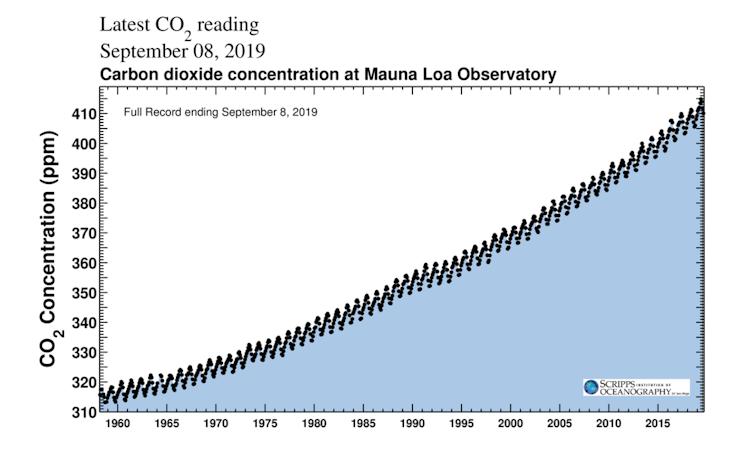I heard that carbon dioxide makes up 0.04% of the world’s atmosphere. Not 0.4% or 4%, but 0.04%! How can it be so important in global warming if it’s such a small percentage?
I am often asked how carbon dioxide can have an important effect on global climate when its concentration is so small – just 0.041% of Earth’s atmosphere. And human activities are responsible for just 32% of that amount.
I study the importance of atmospheric gases for air pollution and climate change. The key to carbon dioxide’s strong influence on climate is its ability to absorb heat emitted from our planet’s surface, keeping it from escaping out to space.

Early greenhouse science
The scientists who first identified carbon dioxide’s importance for climate in the 1850s were also surprised by its influence. Working separately, John Tyndall in England and Eunice Foote in the United States found that carbon dioxide, water vapor and methane all absorbed heat, while more abundant gases did not.
Scientists had already calculated that the Earth was about 59 degrees Fahrenheit (33 degrees Celsius) warmer than it should be, given the amount of sunlight reaching its surface. The best explanation for that discrepancy was that the atmosphere retained heat to warm the planet.
Tyndall and Foote showed that nitrogen and oxygen, which together account for 99% of the atmosphere, had essentially no influence on Earth’s temperature because they did not absorb heat. Rather, they found that gases present in much smaller concentrations were entirely responsible for maintaining temperatures that made the Earth habitable, by trapping heat to create a natural greenhouse effect.
…click on the above link to read the rest of the article…